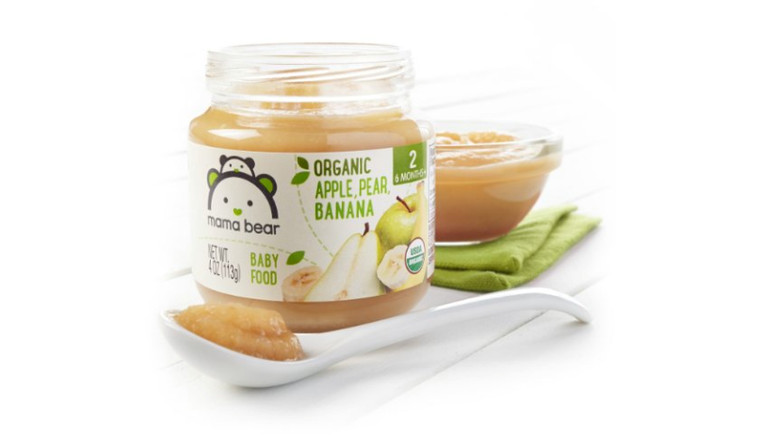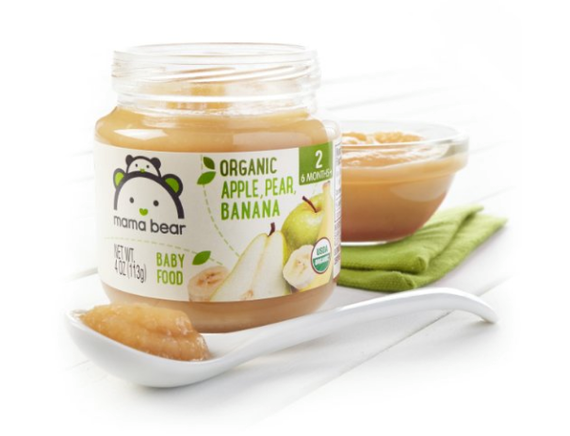

After years of rumors and innuendo, Amazon.com finally seems poised to launch a large-scale push into its own lines of consumables, launching Happy Belly coffee and Mama Bear baby food in June 2016.
In a transcript of a recent podcast, Keith Anderson discusses why Amazon is investing in private label consumables, how Amazon’s private label strategy is different to traditional retailers, as well as guidance on how CPG brands should respond.

Private label is not a new topic for Amazon. The e-tailer has been selling private label electronics and home goods under own brands for many years, launching the Elements brand in 2014, a line of diapers and baby wipes. But just a few weeks ago, Amazon launched Happy Belly coffee and Mama Bear baby food.
When you think about private label in the traditional supermarket channel, it is just a given. In fact, approximately 10 or 11% of all US grocery sales are accounted for by private label, representing a much higher percentage in Europe.
In the brick-and-mortar retail world, national brands have always had to contend with private label products from retailers. Historically, while there are all some kinds of complexities and challenges to doing business with Amazon, some brands viewed the relative absence of private label products owned and sold by Amazon as an advantage.
Why is Amazon investing in private label?
The primary lever for private label products is margin related. In other words, if you owned the product and you’ve eliminated the intermediary, you can save on marketing and distribution cost.
A lot of value tier private labels minimally invest in building brand equity in traditional equity building activities. You spend very little on marketing, and instead you perhaps give those brands prominent shelf space.
There is an effective rationale for offering an opening price point option on the merchandise ladder for the really value or price conscious shopper, so that you grow the category without necessarily trading shoppers down to a cheaper product. When you think about the role of private label to Amazon, they obviously have a very clear price leadership orientation or at least a strategy that involves matching the market on price.
Amazon also tend to want to build assortments that are on trend and responsive to specific product attributes, with characteristics that they know are in demand. If you look at what Amazon is doing, they’re certainly motivated by some of the same motivations as traditional retailers. They can improve their bottom line and improve margins in the category but they can also leverage a lot of the tools that they have at their fingertips to meet shoppers needs – perhaps faster than national suppliers can or choose to.
Consumables and the question of profitability
There’s no doubt at this point that Amazon is committed to grocery and consumables, not only in their headquarter market but in a global sense. That’s really reflected in the launch and expansion of Prime Pantry in the US and subsequently in the UK, as well as the arrival of AmazonFresh in growing numbers of markets. Equally, the expansion of Prime Now, the Dash Replenishment Service and Dash buttons, and even to an extent the Echo and Alexa voice assistants, all underscore that Amazon is fundamentally committed to consumables products on a global basis.
However, it’s been very well discussed and documented that consumables products, both perishable and non-perishable, present all kinds of economic challenges – certainly in the original national ship model that Amazon pioneered, but even in some of these other local or semi-local full basket or full box models like Pantry and Fresh.
The ability to improve margins represents a clear economic incentive for Amazon, or any other retailer, to introduce private label as a way to improve the margin mix in an inherently low margin category. Particularly for a retailer like Amazon whose whole business model is predicated on scale, getting a little bit of improvement in your margin mix in some of your highest velocity, highest household penetration categories like consumables is just a natural thing to see happen.
Why is Amazon’s private label strategy different?
There are a few important things to note about the way Amazon might be building their private label business that are a little distinct from traditional retailers.
One thing that’s really worth paying attention to is all of the data that Amazon has that other retailers may not, or at least suppliers may not. One very good example is category size. In other words, on its own platform, Amazon knows exactly the size of a given category and those categories’ growth rates. They not only know that based on what’s on their own first party assortment, but a category leader at Amazon has visibility across both the first party and the third party marketplace.
Conceivably they’ve got a pretty complete understanding of category size and growth, which would be really helpful for prioritizing which categories might be worth investing in. Amazon also knows a lot about what people are searching for. Again, we’ll cover this in more depth in a future episode but there’s a huge difference in the intent signaled in searches on retailer sites versus searches on Google or traditional search engines.
What we often find is the context of those searches on a retailer site is much more detailed. It tends to be product benefit or characteristic focused, and Amazon has the potential to analyze what people are searching for and either are finding, or maybe just as importantly, not finding in the selection that’s available on the site. It could be the pure frequency of searches for a given trend like organic, natural or gluten.
Hypothetically, Amazon could also do some analysis between the most frequently searched terms shoppers are actually using and the products available in their selection. And of course Amazon has an incredible volume of product ratings and reviews, as well as customer questions and answers. The text of those reviews and the text of those questions also reveal a lot about the characteristics and product attributes that shoppers either like or don’t like.
The importance of unbranded search at Amazon
There’s very well documented and publicized research from BloomReach and many others which underscores that more shoppers actually research products on Amazon than even Google. When shoppers are searching on Amazon, they are presented with products relevant to whatever they search for. We tend to classify searches in two ways: branded searches are searches for a specific brand, and unbranded searches are just generic category oriented searches.
A branded search might be for Cheerios and an unbranded search would be gluten-free cereal. What’s really important to understand distinctly about eCommerce, and Amazon specifically as it relates to private label, is this concept of placement. In a brick-and-mortar store, private labels tend to be placed often on the bottom shelf or in the middle of the aisle.
In general, private labels do not tend to have the most favorable placement at eye level in the places that are most heavily trafficked, but if you think about eCommerce and Amazon, because of the importance of search and specifically unbranded search, there is the possibility that when somebody searches for unbranded search terms like diapers or beef jerky or coffee or baby food, Amazon may overtime give disproportionate weight to its own labels for those unbranded terms.
One of our recent podcast guests, Melissa Burdick of the Mars agency (and formerly of Amazon), wrote a very powerful piece on LinkedIn recently titled “Should CPGs Be Worried About Amazon Private Label?“. In the post, Melissa made a couple of very important observations.
Firstly, when you look at the Amazon Elements detail page, the hot link feature which appears down the page and shows other items within Amazon’s bestsellers rank, is disabled.. Melissa notes that this is one of the ways that customers shop and discover products, therefore finding other best-selling products becomes more difficult.
The second observation Melissa makes is that CPG brands should be looking at what Amazon is doing as inspiration. She says watch and study what Amazon does closely and use them as a best-in-class example.
What is the packaging look like? How does it come shipped? What content are they building? What’s the selling price? What marketing leverage are they using to create buzz, traffic and ultimately sales? I think there is a really compelling point as Amazon starts expanding their private label consumables.
Guidance for CPG brands
Drive innovation: If you were to look at each of Amazon’s new private labels, what you would likely find is that there are existing national brand products that offer the same features and benefits. I think this is probably going to force brands to not necessarily add to their new product development pipeline but you may want to consider releasing innovation to Amazon sooner than historically you would have if Amazon becomes a really key player in your category.
Pay attention to price pack architecture at a strategic and item level: I think CPG brands are going to have to optimize price pack architecture, which in the brick-and-mortar world is a very common discipline. It’s becoming more important in the online channel and especially at Amazon, as the value equation evolves with different programs like Prime Pantry and Fresh, and where individual products can be offered more viably.
Amazon’s move into private label is also going to have implications for some of the more fundamentals of online competition for CPG brands: discoverability and search results in category listings, providing complete and compelling product content, encouraging and responding to product reviews and questions, and maintaining continuous stock availability.
Keep an eye on your best performing SKUs: I would encourage any of the national brands in categories where Amazon has launched some of these new private labels to pay very close attention to your best performing SKUs. Study what Amazon is doing and meet or beat them at their own game. The odds are good that you have stronger equity and better products. Amazon is a master of its own platform and so you’re going to have to master their platform as well – but I believe it’s easier for a strong brand to master Amazon’s platform than it is for Amazon to master branding.
Pay to play on Amazon: You may want to consider selectively paying to play, particularly as it relates to sponsored search. That again is due to the power of Amazon’s search algorithm and the dominance of search as a pathway to products at Amazon. I think the likely driver of growth in Amazon’s private labels is going to be those unbranded search results.
We’ll be following the performance of Amazon’s new private label products in our Amazon FastMovers reports. Sign up for your complimentary report to monitor whether these new products are penetrating the 100 best-selling items in your category.


























